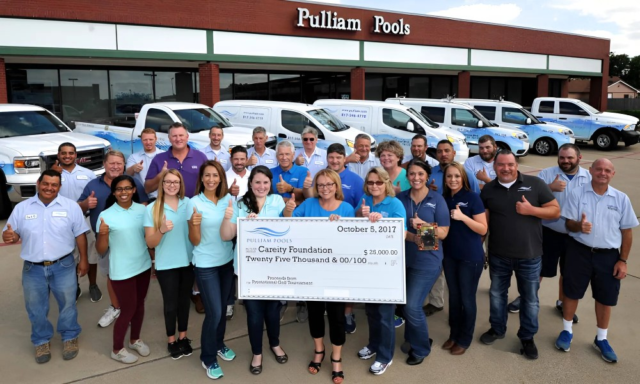How to Test the Water Quality of Your Swimming Pool
It’ll be no surprise to learn that the most important aspect of any swimming pool is its water. If you own a backyard pool and want to make the most of it, it’s important that you keep the water in the very best condition and of a suitable quality.
To do this, regular water testing must take place to determine its quality and indicate when it is necessary to apply chemicals.
In this article, the team here at Pulliam Pools will outline how you can test the water quality of your swimming pool, keeping it safe for everyone to swim in and enjoy.

What do water levels need to be?
Swimming pool water can be complex, with a whole host of different chemical readings needing to be tested. However, you primarily need to focus on three key things:
- Chlorine
- pH levels
- Total alkalinity
To test these, you can use chemical testing strips. Simply dip the strip into the water and the colour change will indicate the various strengths of the different chemicals.
Each reading should be within a certain range for the pool to be safe to swim in.
Chlorine
Perhaps the most important pool chemical is chlorine, which is added to the water to kill germs and sanitise it.
A good chlorine level is considered to be between 1.0 ppm to 4.0 ppm.
If this level is too low, then algae, bacteria, and viruses will be able to thrive in the water, which can have negative health implications for those swimming in it.
In contrast, if the level of chlorine in your water is too high, it can cause skin or eye irritation.
pH levels
pH levels should be somewhere between 7.2 to 7.6, with 7.4 considered the optimum level.
If pH levels are too low, swimmers can experience eye irritation and the metal parts of the pool, such as steps, ladders and diving boards, may become corroded. And if the pH is too high, the water will be too acidic to swim in and can cause skin rashes.
Total alkalinity
The total alkalinity of pool water should be between 80 ppm to 120 ppm.
If the level is too low, your chlorine will be used at a faster rate, meaning the pool will become dirtier quicker. But if the alkalinity level is too high, it’ll likely have the same effects as when the pH level gets too low.
It’s worth noting that total alkalinity and pH are linked, and adjusting one will likely impact the other.
How often should swimming pool water be tested?
You should test your pool water at least once a week, and apply the various chemicals where necessary.
Some people may choose to test their swimming pool water every day, especially during the summer months when the pool is being used more regularly.
If you simply want to enjoy all of the benefits of owning a backyard swimming pool without having to worry about the hassle of maintenance, Pulliam Pools is here to help. As award-winning pool builders in Fort Worth, Weatherford, Arlington, and the surrounding areas, we’ve spent more than a century crafting dream pools for our customers. Our range of services also includes weekly pool maintenance, which sees a member of our team visit your property to carry out necessary maintenance tasks including testing water and adding chemicals to ensure your pool is always safe to swim in.




